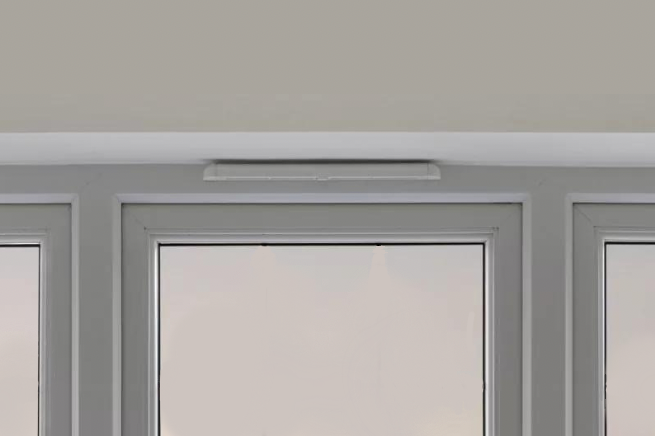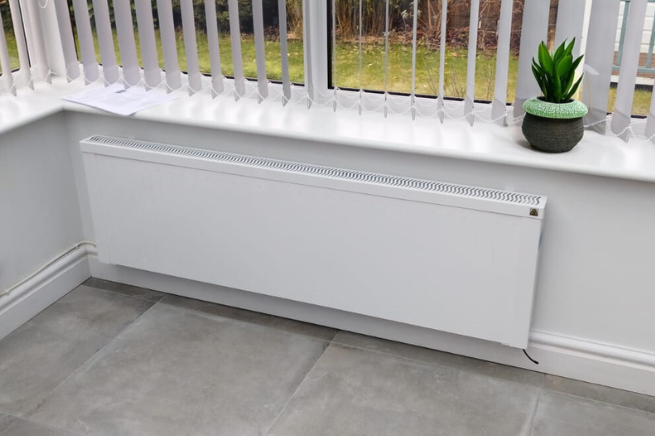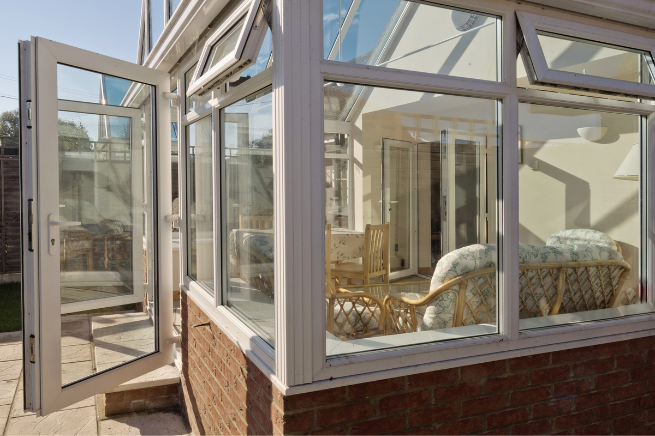
Are you struggling with conservatory condensation, especially on these cold winter months? Rest assured, it’s a common challenge for many. In this guide, we’ll delve into simple yet powerful strategies to stop and prevent condensation in your conservatory. Whether it’s condensation on your conservatory windows or roof panels, we’ve got you covered.
Understanding Conservatory Condensation
Condensation in a conservatory is a common problem that frustrates many homeowners. This issue typically arises when warm, moist air from inside your conservatory meets the cooler surface of the conservatory’s metal frame, glass windows, or doors, particularly during the winter months. Not only is this a nuisance, but it can also have a detrimental effect, potentially leading to mould growth, which is harmful both to your conservatory’s structure and to your indoor air quality. But don’t worry, there are several ways to stop condensation:
How Can I Improve Ventilation in My Conservatory to Reduce Condensation?
1. Crack Open a Window for Good Ventilation
A simple, yet effective way to reduce condensation is by allowing better air circulation inside your conservatory. Opening a window slightly, even just a crack, can significantly reduce moisture and improve the airflow, preventing the buildup of water vapour that leads to condensation. If your conservatory has little ventilation, this can make a big difference.
2. Install Trickle Vents for Continuous Airflow

Trickle vents are a fantastic addition to any conservatory. They provide a constant, controlled source of air flow, ensuring good ventilation even when windows and doors are closed. These vents are particularly effective in managing the climate in your conservatory, balancing indoor and outdoor temperatures to reduce condensation.
3. Consider Conservatory Roof Vents
Incorporating roof vents into your conservatory roof design can be a game changer. These vents allow warm, moist air to escape from the highest point – the roof – which is a common area for condensation, especially in conservatory roof panels. Roof vents improve the overall air circulation and regulate temperature, making them an efficient solution for managing condensation.
4. Use Condensation Catchers
Additionally, consider installing condensation catchers on windows and near a roof vent. These handy tools absorb excess moisture and help in maintaining a clear view. They’re especially useful in conservatories where structural limitations might mean there’s still areas with little ventilation.
What Are the Best Heating Options for My Conservatory?
Electric Heaters

Our range of energy-efficient electric heaters does more than just provide heat; they play a crucial role in reducing humidity and tackling condensation in your conservatory. The heat generated by these heaters warms the air and surfaces within the conservatory, preventing the formation of condensation. When the air and surfaces like windows, doors, and the metal frame are warmed, there’s less chance for the moisture in the air to condense on these cooler surfaces. This not only helps in maintaining your conservatory warm at a comfortable temperature but also significantly lowers the risk of mould caused by excess moisture. By integrating electric heaters into your conservatory, you’re opting for a solution that offers both heating and a proactive approach to managing condensation.
Interested in learning more about how electric heaters can enhance your conservatory? Read our complete guide on electric heaters.
How Does Insulation Affect Condensation in Conservatories?
1. Seal it Right
It’s essential to check the seals around your windows and doors regularly. Why? Because proper sealing is more than just a matter of keeping out drafts. It plays a crucial role in preventing an extra moisture build-up in your home. This extra moisture can lead to a condensation problem, especially in areas with significant temperature differences. When warm, moist air hits a colder surface, like a poorly insulated window, it cools down rapidly and releases moisture, leading to condensation. Over time, this can make the problem worse, as consistent condensation in moist areas often leads to the growth of mould, which is not only unsightly but can also pose health risks.
2. Upgrade Your Glass

Consider the age and condition of your conservatory windows or roof panels. If they are on the older side, they might be contributing to your condensation problem. Upgrading to double or triple-glazing can make a substantial difference. Here’s how: Double or triple-glazed windows consist of two or three glass panes separated by a vacuum or gas-filled space. This design significantly reduces heat transfer, maintaining a more consistent temperature on the interior surfaces of your windows. As a result, the likelihood of condensation forming is drastically reduced. Plus, these types of windows are more energy-efficient, which can help in lowering your heating bills. Remember, while the initial cost of new windows might seem high, the long-term benefits of reduced condensation, lower energy bills, and a decrease in condensation problems can make this a worthwhile investment.
What Are Effective Ways to Control Humidity in My Conservatory?
1. Use a Dehumidifier

A dehumidifier is an excellent tool for controlling humidity levels in your conservatory, thereby preventing condensation. By actively removing water vapour from the air, a dehumidifier can reduce the likelihood of mould growth, especially around the conservatory’s metal frame and roof panels. This helps in maintaining a healthier and clearer environment.
2. Manage Indoor Plants
Some plants release excess moisture out into the air, so consider the number and type of plants in your conservatory.
Some plants you should avoid are:
-
Tropical Rainforest Plants: Plants like the Areca Palm or Rubber Plant are natural humidifiers and can release a lot of moisture.
-
Water-Loving Plants: Species such as Peace Lilies and Spider Plants, though excellent for indoor air quality, also transpire a lot.
-
Fruit-Bearing Plants: Tomato plants or citrus trees, typically require a lot of water and release moisture into the air.
-

Opt for plants that absorb moisture from the air, like ferns or orchids, or limit the number of plants during the winter months.
-
Orchids: While they require a humid environment to thrive, orchids absorb moisture from the air through their leaves.
-
Ferns: Boston ferns and sword ferns can absorb moisture and are great for balancing humidity in a conservatory.
-
Succulents and Cacti: These plants are native to arid environments and are excellent at storing water, so they don’t add much moisture to the air. Examples include Aloe Vera and Jade Plant.
Discovering the Most Effective Solutions for Reducing Conservatory Condensation
In conclusion, numerous effective methods are available to minimize condensation in conservatories. These range from straightforward fixes like introducing specific house plants, to more significant measures such as upgrading to electric radiators or making structural modifications. Among these, the use of energy-efficient electric heaters and enhancing insulation with better-sealed, upgraded windows are the most impactful in reducing condensation. Implementing these practical and straightforward tips ensures that your conservatory remains a comfortable, condensation-free space all year round. Remember, even small efforts to prevent condensation can significantly preserve the beauty and functionality of your conservatory, transforming it into a cozy and welcoming retreat regardless of the season.